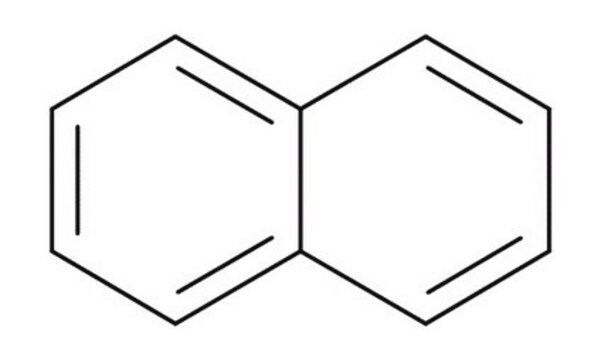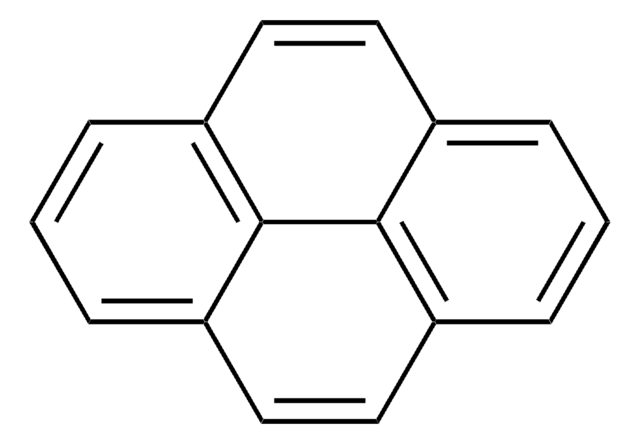Kluczowe dokumenty
PHR1275
Naphthalene
Pharmaceutical Secondary Standard; Certified Reference Material
Synonim(y):
Naphthalene
About This Item
Polecane produkty
klasa czystości
certified reference material
pharmaceutical secondary standard
Poziom jakości
agency
traceable to USP 1457083
gęstość pary
4.4 (vs air)
ciśnienie pary
0.03 mmHg ( 25 °C)
Certyfikat analizy
current certificate can be downloaded
temp. samozapłonu
978 °F
granice wybuchowości
5.9 %
metody
HPLC: suitable
gas chromatography (GC): suitable
bp
218 °C (lit.)
mp
80-82 °C (lit.)
Zastosowanie
pharmaceutical (small molecule)
Format
neat
temp. przechowywania
2-30°C
ciąg SMILES
c1ccc2ccccc2c1
InChI
1S/C10H8/c1-2-6-10-8-4-3-7-9(10)5-1/h1-8H
Klucz InChI
UFWIBTONFRDIAS-UHFFFAOYSA-N
Szukasz podobnych produktów? Odwiedź Przewodnik dotyczący porównywania produktów
Opis ogólny
Zastosowanie
Komentarz do analizy
Inne uwagi
Przypis
Hasło ostrzegawcze
Warning
Zwroty wskazujące rodzaj zagrożenia
Zwroty wskazujące środki ostrożności
Klasyfikacja zagrożeń
Acute Tox. 4 Oral - Aquatic Acute 1 - Aquatic Chronic 1 - Carc. 2 - Flam. Sol. 2
Kod klasy składowania
4.1B - Flammable solid hazardous materials
Klasa zagrożenia wodnego (WGK)
WGK 3
Temperatura zapłonu (°F)
173.3 °F - closed cup
Temperatura zapłonu (°C)
78.5 °C - closed cup
Wybierz jedną z najnowszych wersji:
Certyfikaty analizy (CoA)
Przepraszamy, ale COA dla tego produktu nie jest aktualnie dostępny online.
Proszę o kontakt, jeśli potrzebna jest pomoc Obsługa Klienta
Masz już ten produkt?
Dokumenty związane z niedawno zakupionymi produktami zostały zamieszczone w Bibliotece dokumentów.
Klienci oglądali również te produkty
Nasz zespół naukowców ma doświadczenie we wszystkich obszarach badań, w tym w naukach przyrodniczych, materiałoznawstwie, syntezie chemicznej, chromatografii, analityce i wielu innych dziedzinach.
Skontaktuj się z zespołem ds. pomocy technicznej











